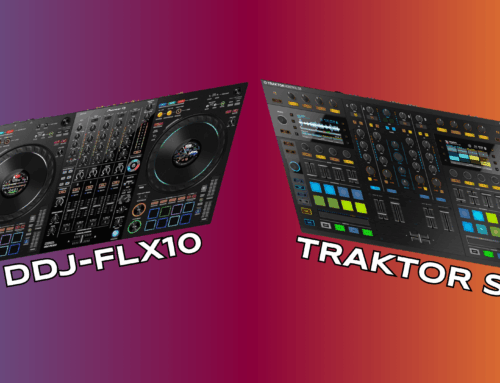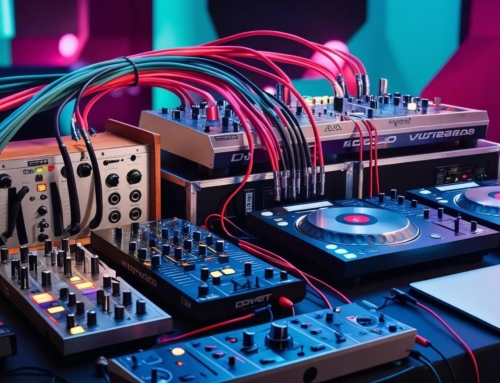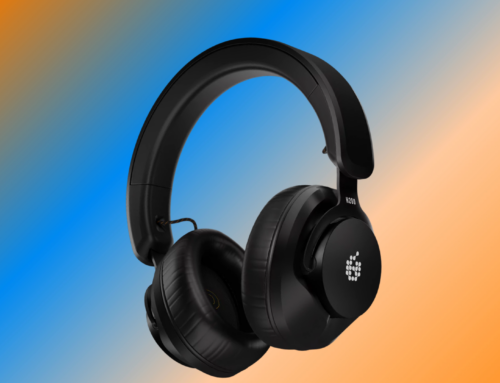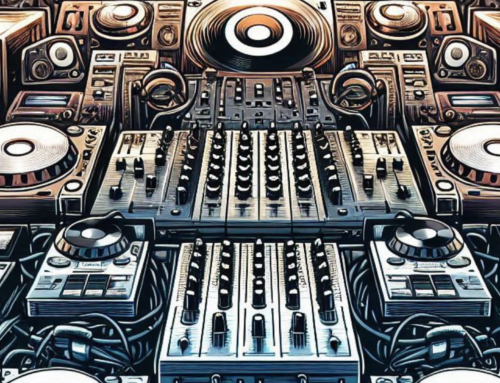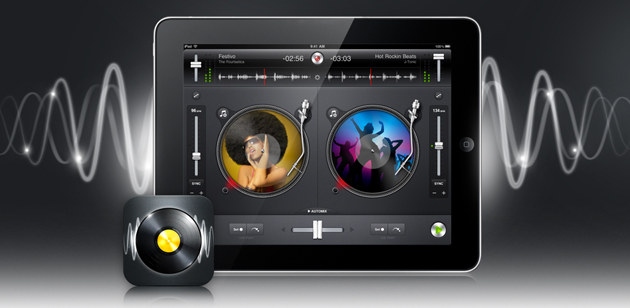 If you are at all familiar with DJ apps, you’ve probably heard of djay from Algoriddim. Touted as the #1 DJ app on iTunes, djay was the winner of the 2011 Apple Design Award. Prior to this review, my only previous experience with djay was a quick 5 minute session on a display iPad inside of Best Buy. At that time, I thought it seemed like a cute little DJ app for the consumer market, and didn’t think it was a legitimate solution for any “real” DJ situation. More recently, I gave djay a closer look, and spent a considerable amount of time digging into all of the app’s features and settings. In the end, I was surprised at the performance of features of this little app, and ended up enjoying it much more than I had initially expected.
If you are at all familiar with DJ apps, you’ve probably heard of djay from Algoriddim. Touted as the #1 DJ app on iTunes, djay was the winner of the 2011 Apple Design Award. Prior to this review, my only previous experience with djay was a quick 5 minute session on a display iPad inside of Best Buy. At that time, I thought it seemed like a cute little DJ app for the consumer market, and didn’t think it was a legitimate solution for any “real” DJ situation. More recently, I gave djay a closer look, and spent a considerable amount of time digging into all of the app’s features and settings. In the end, I was surprised at the performance of features of this little app, and ended up enjoying it much more than I had initially expected.
First Impressions
I really like the look and layout of the djay app. It’s very clean and easy to understand. In fact, at first glance, the app appears to be somewhat limited in features and options, but that’s not the case at all. The more complex options can be accessed via the settings “gear” in the middle of the screen and the little 3-band eq icon on each deck (I’ll cover these in greater depth later on). Since I’ve been spinning on the same set of Technics SL-1210MK2s for the past 12 years, I really appreciated the realistic turntable look of the app’s platters. Even the tonearms look legit. You are able to scratch with the little platters by using one finger, and by using two fingers to scratch, the “Auto-Cut Scratching” mode is enabled. This is basically an automatic transformer scratch to the tempo of the track currently playing.

I also enjoyed being able to move the tonearm around on the virtual record to find a particular point in the song. Out of curiosity, I pressed the red “on/off” platter light on the virtual turntable. To my surprise (and slight chuckle), it powered down the deck and slowly brought the track to a stop, just as it would on a real turntable. The track waveforms are displayed above the platters and remain in “zoomed-out” mode until you move the record on the jogwheel platter. Then, the waveform automatically zooms in to allow you to more accurately set cue points and loops. Pitch sliders are located on each side of the app with bend buttons located below. I was disappointed to find that the default pitch slider setting is the reverse of what it should be on an actual turntable (up was + and down was -), but there is an option inside of the settings that allows you to change this. Each deck also features a “key lock” button, sync button, and volume controls (located in the upper right and left corners). A crossfader sits in the lower middle of the djay app with a play button, set cue button, and play cue button on each side.
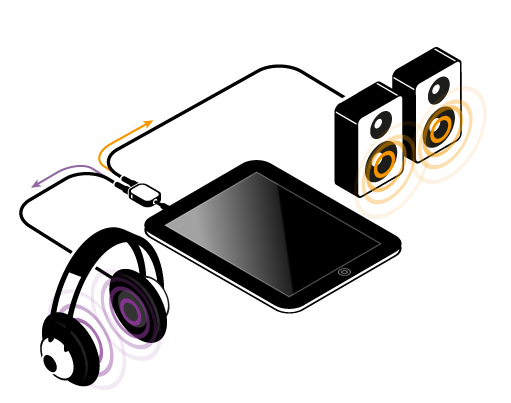
Playing Tracks
The first time a track is loaded, djay takes a few moments to scan the track for bpm information and does a surprisingly accurate job of detecting the tempo. The library section is well organized with a search function to help locate tracks and also displays bpm information for previously scanned tracks. At one point in my demo, I accidentally loaded a full-length Tribe Called Quest documentary video to one of the decks, which took a minute or so to scan for bpm information. Although it didn’t crash the app, it did lock me out of that particular deck until the scan was complete. This could be potentially awkward (aka “dead air”) in a live setting if you load the wrong item to one deck right before the song on the other deck ends. On the bright side, it did load the audio from the entire movie relatively quickly and I could play it just like a normal audio file.
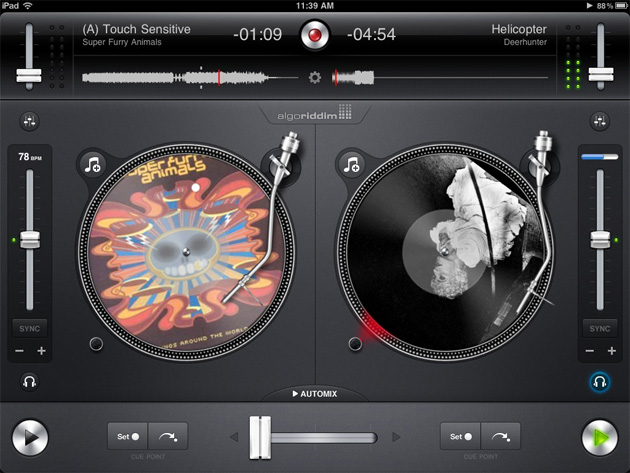
Djay also features an “Automix” function that allows the app to automatically mix the music from a selected playlist. Djay will automatically fade in and out the tracks on the playlist according to the transition options that you select (style, duration, shuffle, and auto-sync). The automix function would work well for dinner or background music (with the auto-sync disabled), but is not a viable substitute for “real” DJ mixing in a club-type situation. Since the fade time is in seconds and not by number of beats, with the auto-sync enabled, your automix quickly turns into a big mess of jumbled, out of phrase songs and beats.
 Mixing songs manually on djay is relatively easy, thanks to all of the features of the app. The percentage range of the pitch sliders can be adjusted inside the settings area, and are very responsive to the touch. I found them to be a little too responsive for fine tuning the tempo, but luckily the settings area gives the option of a “fine tune” mode for the sliders. With this mode enabled, the sliders move much slower when touched, making it easier to dial in the perfect tempo. The pitch bend buttons also work well and the key-lock does an admirable job of keeping the song in key when the tempo is adjusted. There were, however, a few digital artifacts present when large adjustments were made to the tempo. I couldn’t find an option to leave the key lock on permanently, which was slightly frustrating when loading and mixing a new track, but it’s simple to re-engage with the push of a button. The “sync” button on each deck automatically matches the tempo of that deck to that of the deck currently playing. It does a nice job of this, but a little pitch bending is required to pull off a good mix. In my experience with djay, pressing the sync button on a deck in the middle of the mix throws everything off by causing the track to jump to a different, incorrect beat. To remedy this, djay would need a more precise beat-gridding algorithm, much like the one Mixvibes uses in their CrossDJ app.
Mixing songs manually on djay is relatively easy, thanks to all of the features of the app. The percentage range of the pitch sliders can be adjusted inside the settings area, and are very responsive to the touch. I found them to be a little too responsive for fine tuning the tempo, but luckily the settings area gives the option of a “fine tune” mode for the sliders. With this mode enabled, the sliders move much slower when touched, making it easier to dial in the perfect tempo. The pitch bend buttons also work well and the key-lock does an admirable job of keeping the song in key when the tempo is adjusted. There were, however, a few digital artifacts present when large adjustments were made to the tempo. I couldn’t find an option to leave the key lock on permanently, which was slightly frustrating when loading and mixing a new track, but it’s simple to re-engage with the push of a button. The “sync” button on each deck automatically matches the tempo of that deck to that of the deck currently playing. It does a nice job of this, but a little pitch bending is required to pull off a good mix. In my experience with djay, pressing the sync button on a deck in the middle of the mix throws everything off by causing the track to jump to a different, incorrect beat. To remedy this, djay would need a more precise beat-gridding algorithm, much like the one Mixvibes uses in their CrossDJ app.
Additional Features
As I mentioned earlier, the layout of djay is very clean and simple, but the additional features unlock the true potential of this app. If you are using djay for the first time, I recommend going into the settings right away via the little gear icon between the waveforms at the top of the screen. Here, there are a number of customization options including splitting the audio for headphone cueing and master output.
On each deck, the little 3-band eq icon above the pitch sliders accesses the effects/loop/cue area. In the effects section, there are 5 effects to choose from: gate, echo, flanger, phaser, and bit crusher. The first effects screen (there are 3 screens to choose from), allows the effects to be controlled with an XY touch pad. The second effects screen features “Instant FX” buttons that are basically pre-set combinations of effects parameters. The third effect screen is my favorite, “Manual FX”. This screen allows you to engage a particular effect by pressing the button at the top and adjust the intensity with a slider below. A second slider on this screen acts as a HP and LP filter. All of the effects sounded pretty good, but to me, they sounded best at lower intensity levels (higher intensity made the effects sound too “digital” for my taste).
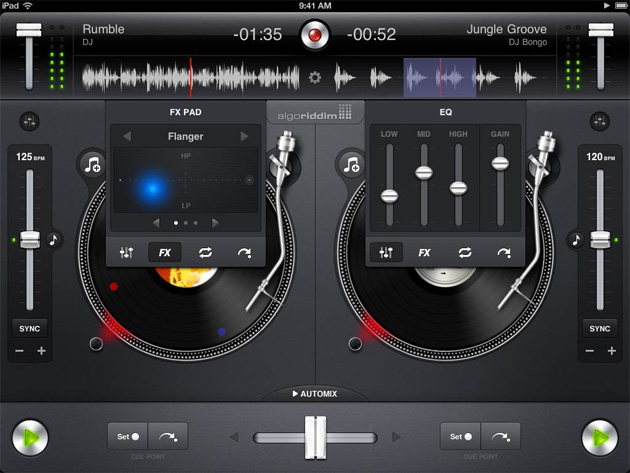
The looping section allows you to set a seamless loop between 2 and 32 beats in length. Every loop I set in a track was nearly perfect and right on beat. I even purposely tried to set a loop too early or too late, and djay automatically adjusted the loop to the nearest beat.
The cue section allows you to set an additional 3 cue points and recall them at any time with 3 separate cue play buttons. I had a great deal of fun treating this section like a drum machine. With the deck stopped, I was able to trigger different beats and sections of the track by pressing and releasing the cue play buttons. As with the cue button on each deck, all of the cues are saved with the track for future use.
In Conclusion
The beauty of djay is that it can be as simple or as complex as you would like it to be. It functions well as a simple, consumer grade DJ app or as a semi-professional DJ mixing station. As you decide to get more complex with the various options and features, the great design of the app becomes more apparent. It responds well to multiple simultaneous screen touches like using the jog wheel while setting a perfect cue point, fading out of a track while adjusting the filter, etc. In my extensive demo, I did not have one stability issue or glitch in the audio. Perhaps most importantly, djay is just a fun app to mix around with. At $19.99 on the iTunes app store, djay is more expensive than most DJ apps, but performs at a level similar to professional DJ apps costing much more.
